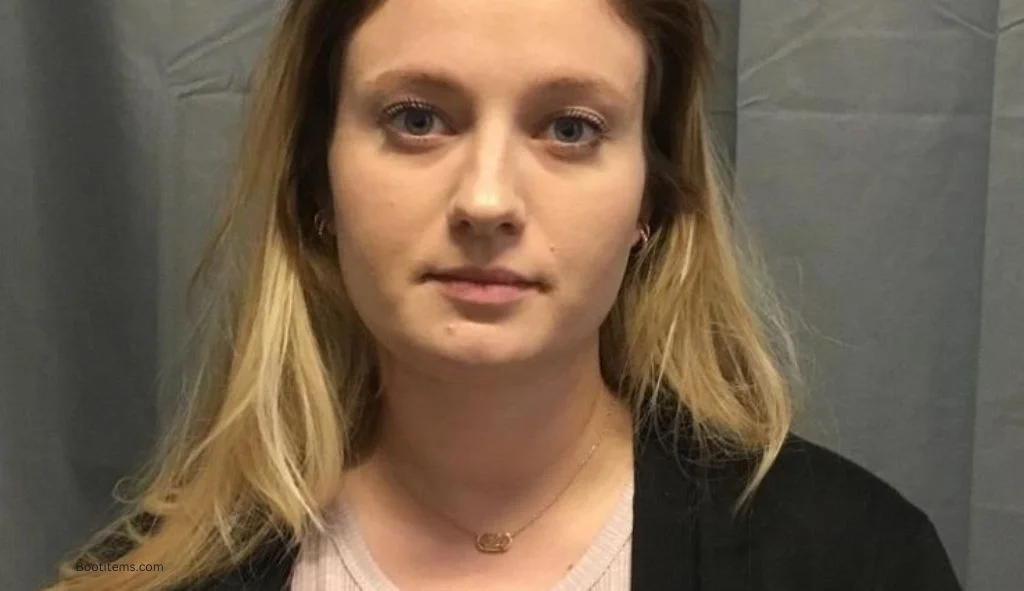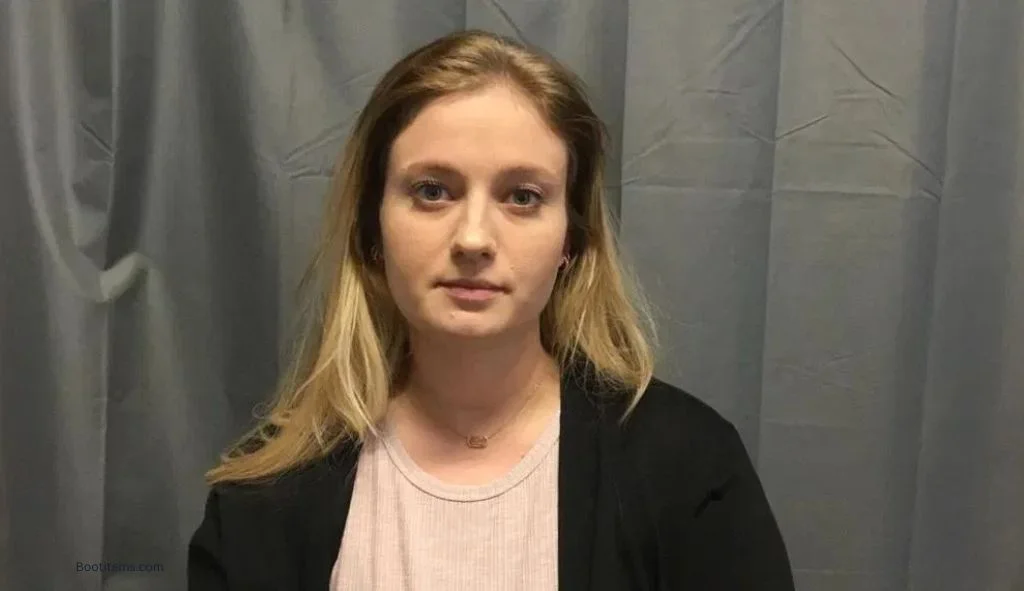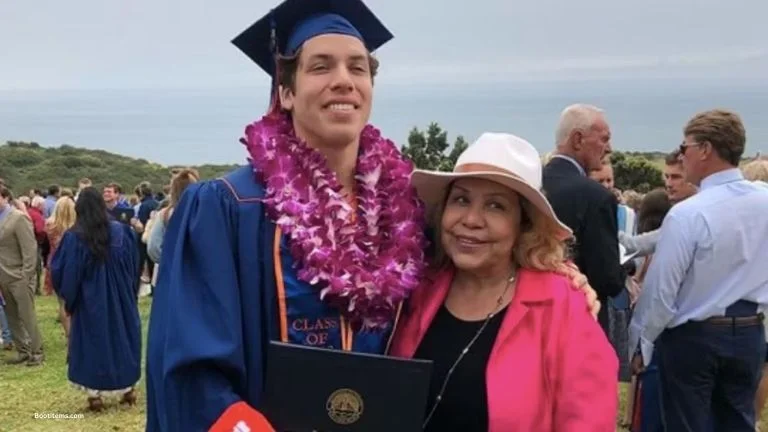Emma Hancock: Former Teacher Jailed For Student Misconduct
Emma Delaney Hancock, a former Wellston substitute teacher, was sentenced to four years in prison for soliciting sexual conduct with a minor through technology after inappropriate interactions with students.
The Case of Emma Delaney Hancock
Emma Delaney Hancock, a 28-year-old former substitute teacher at Wellston Public Schools in Oklahoma, found herself at the center of a criminal case that shocked the small community. Her conviction and subsequent sentencing in December 2024 brought to light serious issues regarding teacher-student boundaries and highlighted the legal consequences of inappropriate conduct in educational settings.
Hancock’s case gained particular attention not only because of the nature of the charges but also due to her connections within the community. As the daughter of Wellston Mayor Paul Whitnah and the wife of Wellston Police Chief Alfred Hancock, with whom she shares two children, her legal troubles sent ripples throughout the town.
Background and Charges
The case against Emma Hancock began in late 2022 when allegations surfaced regarding inappropriate communications and conduct with students. According to court records, Hancock’s inappropriate behavior primarily involved a 15-year-old sophomore student at Wellston High School, where she worked as a substitute teacher.
The initial contact between Hancock and the student occurred on October 6, 2022, when the student provided his phone number to her, ostensibly for help with an assignment. Later that same evening, Hancock sent the student a friend request on Snapchat, and they began exchanging messages. What started as seemingly innocent communication quickly escalated into inappropriate territory.
According to testimony, the relationship took a sexual turn after the student sent Hancock a shirtless picture of himself from the baseball locker room. When questioned about why he sent the photo, the student testified that he “couldn’t tell you why.” Hancock allegedly responded with “Are we sending half-naked pictures?” followed by “Are you trying to get me to lose my job?” despite continuing the inappropriate communications.
The Criminal Trial and Evidence
The criminal trial against Hancock began in October 2024 and lasted three days, featuring testimony from approximately two dozen witnesses. The prosecution built their case around several key allegations:
- Hancock and the 15-year-old student exchanged explicit photos and videos via Snapchat
- The two allegedly had “aggressive make out” sessions in empty classrooms during school hours
- Hancock showed inappropriate videos to eighth-grade students
During the trial, the student testified that between October 23 and October 30, 2022, he and Hancock exchanged multiple nude photos and videos, including a photo of his erect penis and a video of Hancock masturbating. However, due to Snapchat’s design of automatically deleting opened messages from its servers, investigators were unable to recover the actual content of these communications.
The prosecution also presented evidence regarding a separate incident involving two eighth-grade female students. These students testified that Hancock showed them inappropriate videos from her phone, including footage from a Halloween party where she was seen kissing another woman and pretending to perform oral sex.
Verdict and Sentencing
After deliberating for less than two hours, the Lincoln County jury reached a verdict on October 30, 2024. Hancock was found guilty on two felony counts:
- One count related to sexual messages she sent to the 15-year-old student
- One count for showing eighth-grade students inappropriate videos
The jury recommended a three-year sentence for each count. However, Hancock was acquitted on three other charges:
- Two counts of “lewd or indecent acts to a child under 16”
- One count of “soliciting sexual conduct or communication with a minor by use of technology”
On December 18, 2024, Lincoln County District Court Judge Sheila Kirk sentenced Hancock to four years in prison. If she adheres to the terms of her sentence, she will serve the full four years. As part of her punishment, Hancock is also required to register as a sex offender.
Impact on the Victim and Community
The case had significant impacts on both the victim and the broader community. According to testimony from the victim and his parents, the student transferred from Wellston High School to Epic Charter Schools for the remainder of his sophomore year and the entirety of his junior year due to the emotional toll of the situation.
The victim’s father testified that his son “gets depressed” and that even after returning to Wellston High School, the student felt “it’s not the same.” A family member of the victim told News 4 that the student had to switch to online schooling, missing out on normal high school experiences like sports events, prom, and graduation ceremonies.
The victim’s family has also filed a civil lawsuit against Hancock, alleging nearly identical facts to those presented in the criminal case.
Hancock’s Defense and Response
Throughout the trial and sentencing process, Hancock maintained her innocence despite the evidence presented against her. Her defense team, led by attorney Billy Coyle, attempted to cast doubt on the prosecution’s case by highlighting the lack of recovered digital evidence showing explicit communications.
Hancock’s Testimony
When Hancock took the stand in her own defense, she denied the existence of any inappropriate relationship with the 15-year-old student. She claimed they never sent each other sexual messages and offered an alternative explanation for their interactions.
“The only explanation I have is he was using a vape pen — which I was in the wrong for — and the story got blown up into something it wasn’t,” Hancock testified during the trial.
Regarding the videos shown to the eighth-grade students, Hancock claimed she did not deliberately show them the inappropriate content. Instead, she testified that the students simply looked over her shoulder as the videos played on her phone.
When pressed by Assistant District Attorney Kelly Trimble about why so many witnesses would testify against her if the allegations were untrue, Hancock acknowledged some boundary issues while denying the more serious allegations.
“I feel like there were a couple of inappropriate instances but I don’t think that defines who I am as a person or a teacher,” she stated during cross-examination.
Support from Family
Despite the serious allegations and eventual conviction, Hancock received support from her family throughout the ordeal. Her husband, Wellston Police Chief Alfred Hancock, testified on her behalf during the trial.
“She looked me dead in the eyes and said, there’s nothing [on her phone]. I mean, I believe that there’s nothing there,” Alfred Hancock told jurors. “She’s my wife. I believe her. I’m on her side.”
After the verdict was read, Hancock was given a moment to say goodbye to her family before being taken into custody. The emotional scene in the courtroom highlighted the personal toll the case had taken on all involved.

Legal Implications
The Hancock case has implications that extend beyond the individuals directly involved, touching on issues related to teacher conduct, digital communication with students, and the legal framework surrounding such cases.
Legal Response and New Legislation
In response to cases like Hancock’s and similar incidents, Oklahoma implemented new legislation in 2024 that prohibits teacher-student communication through electronic devices. While not directly linked to the Hancock case, the law demonstrates the growing concern about inappropriate teacher-student interactions facilitated by technology.
The case also highlights the challenges law enforcement faces when investigating allegations involving ephemeral messaging platforms like Snapchat. During the trial, an OSBI agent referred to Snapchat as “not very law enforcement friendly” due to its design of automatically deleting messages after they are viewed.
Professional Boundaries in Education
The Hancock case serves as a stark reminder of the importance of maintaining appropriate professional boundaries in educational settings. As a substitute teacher, Hancock was in a position of authority and trust, which prosecutors argued she violated through her actions with students.
The case illustrates how quickly seemingly innocent communications can cross into inappropriate territory, especially when facilitated by social media and messaging apps that offer privacy and, in some cases, the automatic deletion of content.
Aftermath and Moving Forward
Following her sentencing in December 2024, Hancock began serving her four-year prison term. In addition to the criminal penalties, she faces ongoing civil litigation from the victim’s family.
Civil Lawsuit
In June 2024, the high school student and his father filed a civil lawsuit against Hancock. According to reports, the petition alleges nearly identical facts to those presented in the criminal case. The outcome of this civil action remains pending as of April 2025.
Community Response
The case created significant division within the small community of Wellston. As both the daughter of the town’s mayor and the wife of its police chief, Hancock’s connections ran deep in the local power structure. This dynamic added complexity to how the case was perceived and discussed within the community.
Some community members expressed concern about whether Hancock would receive preferential treatment due to her family connections. However, the prosecution and eventual conviction demonstrated that the legal system was willing to hold her accountable regardless of these ties.
Understanding Teacher Misconduct Cases
The Hancock case is unfortunately not an isolated incident. Teacher misconduct involving students, particularly sexual misconduct, remains a persistent problem in educational settings across the country.
Warning Signs and Prevention
Cases like Hancock’s often exhibit warning signs that might be recognized with proper awareness and training. These can include:
- Teachers who blur professional boundaries by communicating with students outside of school channels
- Excessive personal attention given to specific students
- Sharing of inappropriate content or discussions of personal matters
- Meeting with students alone in private settings
Educational institutions have increasingly implemented policies and training programs designed to prevent such misconduct. These typically include:
- Clear guidelines regarding appropriate teacher-student communication
- Prohibitions on using personal social media accounts to communicate with students
- Training on recognizing and reporting concerning behaviors
- Systems for students to safely report inappropriate conduct
The Role of Technology
Technology plays a dual role in cases like Hancock’s. While digital communication platforms can facilitate inappropriate interactions, they can also provide evidence when misconduct occurs. However, as demonstrated in this case, apps designed to delete content automatically can hinder investigations.
Schools and districts increasingly monitor school-provided communication channels and restrict the use of personal accounts for teacher-student interactions. The legislation passed in Oklahoma prohibiting electronic communication between teachers and students represents one approach to addressing this issue.
Frequently Asked Questions
What specific crimes was Emma Hancock convicted of?
Emma Delaney Hancock was convicted of two felony counts of soliciting sexual conduct or communication with a minor by use of technology. One count related to sexual messages she sent to a 15-year-old student, and the other was for showing inappropriate videos to eighth-grade students.
How long will Emma Hancock be in prison?
Hancock was sentenced to four years in prison on December 18, 2024. According to reports, if she adheres to the terms of her sentence, she will serve the full four years.
What evidence was presented against Hancock during the trial?
The evidence included testimony from approximately two dozen witnesses, including the 15-year-old student, his friends, two eighth-grade students who were shown inappropriate videos, and law enforcement officials. While investigators were unable to recover the actual content of Snapchat messages due to the app’s automatic deletion feature, they were able to confirm the existence of communications between Hancock and the student.
Did Hancock admit to any wrongdoing?
Throughout the trial and sentencing, Hancock maintained her innocence regarding the most serious allegations. She did acknowledge allowing a student to use her vape pen, which she described as “wrong,” and stated there were “a couple of inappropriate instances” but denied sending explicit messages or having physical contact with the student.
What impact did the case have on the victim?
According to testimony from the victim and his family, the student transferred to online schooling following the incidents. He missed out on normal high school experiences like sports events, prom, and graduation ceremonies. Family members testified that he experienced depression and difficulty adjusting even after returning to Wellston High School.
Were there any special circumstances in this case due to Hancock’s family connections?
While Hancock’s position as the daughter of Wellston’s mayor and the wife of its police chief created additional public interest in the case, there is no evidence that these connections affected the legal proceedings. The prosecution pursued the case vigorously, and the jury reached its verdict based on the evidence presented.

Samantha Yates is a creative writer and journalist with expertise in content creation and editing. She holds an MA in Creative Writing and brings professional experience from Lionbridge, where she developed engaging content for leading technology companies







